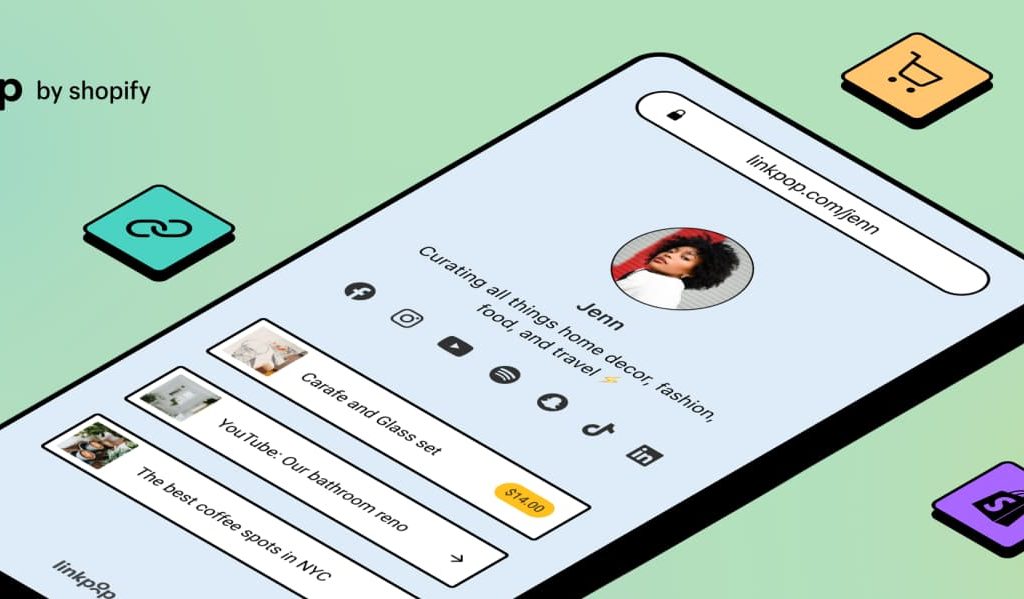One strategy that defines Shopify’s playbook over the past three years is its moves to gain additional distribution channels. Adding everything from Walmart to TikTok gives its merchants greater reach, and thus a hook to attract and retain them on the platform. And it’s latest move: link-in-bio.
For those unfamiliar, the link-in-bio trend is all about including a link within one’s bio on social media profiles. Because there are limited characters to work with, a link can send interested users to a landing page to find out more… and with more elbow room for prose and portfolios.
Of course, none of this sounds very advanced nor new. The link-in-bio movement has come around recently to essentially formalize what was already happening. This includes services like LinkTree that offer simple landing page creation tools. Think of it like this generation’s About.me.
Back to Shopify, it now joins the link-in-bio competitive field with its own offering known as Linkpop. Like the above description, it’s a simple landing page that lets creators and merchants display their wares in a low-friction way. And because it’s Shopify, it’s naturally oriented towards products.
Stepping Stone
So how does it work? After setting up a Linkpop account, merchants can link it to their Shopify store. Then they can fill the experience with stylistic choices and shoppable links to their products. They can also add non-Shopify content such as websites, articles, videos, and online portfolios.
Once that’s all set up, users can generate links (the link-in-bio part) to their Linkpop front page or any individual components. Those short URLs are then available to add to their social media profiles. They can choose to add one central link or rotate thematic variations dynamically.
Linkpop also includes baked-in analytics so that merchants track customer engagement and optimize accordingly. Available metrics are fairly basic – fitting to Linkpop’s simple-forward approach – including link clicks and unique visitors. That’s enough to inform things like layout and featured products.
Notably, everything outlined above except shoppable links are available to non-Shopify merchants. This is presumably to cast a wider net, or attract merchants-to-be that first want to first build a brand. That makes Linkpop a sort of stepping stone for merchants… and an acquisition channel for Shopify.
Meeting Users Halfway
Other than that speculative Trojan Horse play, Shopify is essentially meeting users and current trends halfway. In other words, Linkpop is a bridge between merchants’ social media presence and their full-blown Shopify pages. As such, it also creates a more frictionless user experience.
To go deeper on that last point, one of the benefits of most link-in-bio services is that they can be viewed in a simple form on a mobile device. They can also open within a given social app, rather than bouncing users to a browser page… which is what Shopify storefronts otherwise do.
With this in-between step, Shopify is hoping to gain a native advantage from a UX perspective. This traces back to its DNA in having strong design and UX sensibilities. That plus a penchant for UX simplicity – which is also present here – is one of Shopify’s many success factors.
Speaking of success factors, an ongoing North Star for Shopify is gaining traction and traffic for its merchants – a key acquisition and retention hook, as noted. By easing users in through elegant link-in-bio options within their favorite social environments, it knows it can accomplish this.




